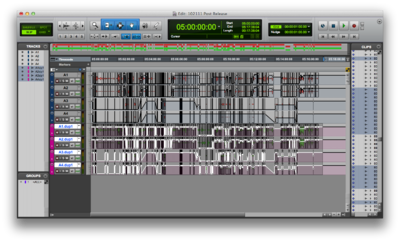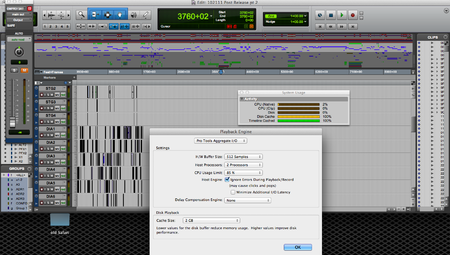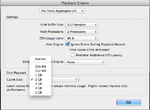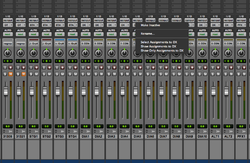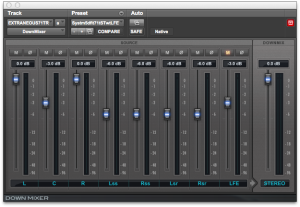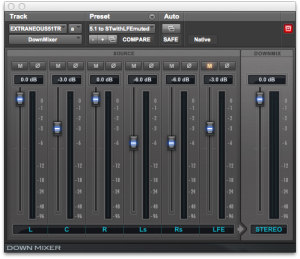11 years ago, nearly to the day, I set foot into a building that I had no idea would become such a big part of my life. I was on my way to meet with Bryan Celano at Soundelux DMG, he was a mutual acquaintance through the church that I attended when in LA. Bryan toured me round the facility and introduced me to Scott Gershin, Alan Rankin, Bill Brown, Mikael Sandgren and Becky Allen. Soundelux DMG had an internship program that I was encouraged to apply for. My university course at Brunel University offered a third year in industry placement and were happy for me to apply to an out-of-country company so I did. All seemed to be going great in June of the following year when I got a call from Becky who was sorry to say that as an intern they could not sponsor a visa request for me to join them but that she'd do what she could to help me.
Becky put in a call to Eddy Joseph who had been hired by the company to establish Soundelux London and a couple of weeks later I would meet with Eddy in his office in London. I have no idea what I was able to say to him that he was satisfied to offer me a day-to-day runner position on a film that was beginning in early October but he did and took me next door and introduced me to my future wife.
October 4th 2004, I began work at Soundelux London. I'd be working with David Mackie, shadowing him in his role and learning from him how to be an assistant sound editor for feature films. He reported to Richard Fordham who was the head assistant and technical manager of the facility. My first day was fairly normal, making tea etc. my second was anything but normal. Per Hallberg, who was the supervisor on the show, invited me to attend a spotting session for the movie. I suddenly found myself sat in Dody Dorn's cutting room with Per, Oliver Tarney, Simon Chase, Richard and Keith Brachmann along with a knight of the realm Ridley Scott. We spent 8 hours watching a cut of Kingdom of Heaven and I was hooked.
Later in the project came my big break, the mix of the film was going to be at Shepperton Studios in South West London while the majority of the sound editorial team was going to be at our Soho based cutting room. I was still day to day at the time although had been for a month or so and was feeling more secure in my role. There was a meeting in our reception area between the network administration team at Ascent Media and our creative and technical team. They were discussing VPN's and data rates, TCP/IP ports and the like. After the meeting there were excel sheets and confusion about what had been discussed, not a misunderstanding just a disconnect between our requirements and what IT were offering. I offered my knowledge as the first degree course I had been on at Brunel was in Internet Engineering, a course I'd dropped in favor of Creative Music Technology when I realized they weren't teaching me anything I couldn't read online. I was in. Two weeks later I had a contract to see out the remainder of my placement year.
During that year I worked on Kingdom of Heaven, Doom, Charlie and the Chocolate Factory and Corpse Bride. I returned to Brunel in late-October 2005 to complete my studies and got a call about six weeks later to get back to work as soon as I could as there was a big project that would be all hands on deck. I had knee surgery scheduled for the end of January and allowed myself a week to recuperate after but I started back to work with Soundelux in early February 2006. That show was United 93, and it was all hands on deck from day one.
During this time, Eddy had been selected to Supervise the reboot of the James Bond franchise. Richard Fordham would again be the first assistant, Dave his second and I was third assistant. This meant that Richard would be following the show around between Soho, Pinewood and various recording shoots all over the country. Dave was kept busy with day to day assisting of the crew left in town and I was able to focus on the rest of the company's projects one of which was moving our facility from 142 Wardour Street to 65 Dean Street (one of Goldcrest's facilities). The move occurred while shooting on the film was still continuing and Stuart Baird wanted sound editorial at Pinewood with him. The crew would move out of Wardour Street to Pinewood and then back to Dean Street all while the show was rolling. I think we may have had a few hours of downtime but not a lot.
After Casino Royale, Stuart Baird moved onto a fix-it show Vantage Point. He demanded to have the same crew as he'd had for Casino. Over the course of the next 12 months, my role with the sound editorial department would leap to first assistant. Richard had other projects to focus on and was moving into a dialogue editor role, Dave was cutting more FX and that allowed a quick progression. It was also during this time I finally met a man who would become very influential and was lucky enough to have him become confident in my abilities as a technician and assistant. That man was David Young, the chief engineer at Soundelux Hollywood.
In December 2007, I was beginning work on a show that would eventually help me to obtain my US work visa. Alongside Simon Chase and Richard Fordham, I worked with picture editorial assistant Mark Fitzgerald and production sound mixer Simon Hayes to troubleshoot workflow difficulties that had become apparent after 12 days of shooting on Green Zone. This first 12 days became one of four sets of production sound rolls that we'd end up carrying forward for the next 18 months and it was my role to wrangle them on a turnover by turnover basis into workable sessions.
In April of 2009, Avid approached Eddy about becoming part of the first round of Customer Advisory Boards they were establishing. Eddy told them that they didn't want him they wanted me. This is something I will forever be grateful to Eddy for (one of the many things but this in particular). The advisory board introduced me to so many influential people in the industry, some of whom went on to write recommendations for my visa's. Michael Philips, who literally wrote the book (or at least website 24p.com) on HD workflows. Gordon Lyon, who amongst other successes (Grammy's etc) was part of the Digidelivery team, and would introduce me to the Avid Beta team. Chris Gahagan, who I have immense respect for and was one of the supporting letters I received. I felt completely out of my depth but seemingly survived.
In November 2009, after more than 5 years involvement with the company, I finally got the chance to work with one of the founders, Lon Bender. Lon was coming to London to work on Morning Glory a show that we had no idea at the time would be the last show at Soundelux London. Lon is a true master of sound supervision and it is easy to see why he has been so successful and built something as great as he and Wylie Stateman were able to. I learnt a lot from Lon and am proud to count him as someone who I can call upon for support, advice and from time to time, work.
March 2010 saw the end of Soundelux London and the start of a weird and wonderful year that led me to the US in April 2011 with Danetracks. Summary of thanks goes to Brian Slack (then of IOSONO), Richard Eastwood (who took me under his wing to provide technical services to the remaining industry), Loft London (Jeremy Bronnitt, Daniel Martin and James Hall) who trusted me with part of their technology and transitions, Primefocus London (Michael Wrightson and Andrew Condie), Dane Davis and Ann Marie Wachel (for calling me in from the cold, wet February in England to come to California), Nancy Kirhoffer, Kehrela Hodkinson and Keith Williams for their combined efforts, patience, belief and knowledge to obtain my first US work visa.
Thanks for reading, part two will follow shortly.




